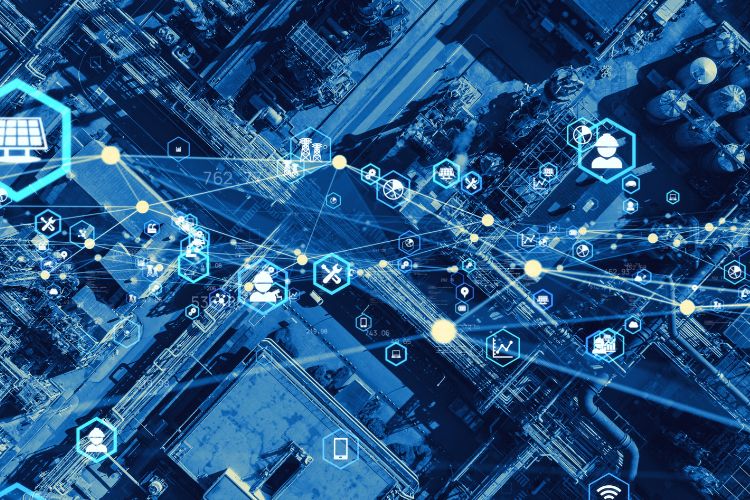Yes, the supply chain for many products, materials, and even components is fractured. The combination of lockdowns, deaths, and illness during the two formative years of the COVID-19 pandemic and the tariffs imposed on steel and aluminum among other materials, has disrupted the availability of many critical building resources. To keep pace, supply chains must now become living, fluid ecosystems coordinated by central platforms.
Many of the companies that contractors depend upon are making the necessary changes to repair the flow of both material and tools of the trade. A familiar name on the jobsite is Hilti and they are using additional digital technology in their business to improve delivery to your business. To improve service levels while at the same time decreasing overall supply chain costs, Hilti is transforming its supply chain planning capabilities with digital system provider Blue Yonder.
Hilti recently completed a successful implementation of Blue Yonder’s SaaS-based Luminate Planning to support its global, integrated business planning process and create a single sales forecast for its end-to-end supply chain. With the Luminate Platform, synchronizing solutions across planning, execution, labor, e-commerce, and delivery optimizes end-to-end business and can be done seamlessly. Leveraging AI (artificial intelligence) and ML (machine learning) capabilities, workflow-driven user experiences, and real-time connections better predicts, prevents, and resolves disruptions across the entire business.
Since Hilti is a multinational company that sells directly to customers, averaging 250,000 customer contacts every day, and launches more than 60 new innovations per year, using a S&OP (standard sales and operational planning) approach makes sense. Adapted to all integrated markets and over 190 production lines, it gives Hilti the same workflow, process, system, and central coordination at all levels of planning.
Blue Yonder provides Hilti with:
Visibility to the potential risks and opportunities, and clear understanding of the financial impacts of each decision. This improves tactical and strategic decision making across sales, marketing, supply chain and finance.
Strong enhancement of visibility and analytics capabilities: standard metrics, improved reporting and analytics supported by Blue Yonder’s Luminate Platform help provide the right visibility and actions.
Improved process maturity: specifically, S&OP process engagement, participation, and discipline within the markets. Having the right people and seniority in the S&OP meetings allows the right discussions and decisions.
Powerful technology capabilities: using Blue Yonder as a common platform with drill-down reporting and volume-to-value capabilities allows the right transparency for all stakeholders.
As a result, Hilti can develop actionable revenue, cost, and margin targets and unite its entire supply chain around achieving those goals. With S&OP, Hilti can develop an integrated global sales plan, production plan, and inventory plan with strong input to new product introduction and financial plan.
Another part of the “supply chain” that has been disrupted throughout the pandemic has been the personnel side. Contractors and trades alike have been seeking new hires and returning employees to fill open jobs. Blue Yonder’s workforce management (WFM) system is a possible assist if not a solution to this aspect of the business. Companies benefit from WFM because:
- Employee work preferences are considered along with business needs to automatically generate schedules that are tailored to individuals for higher employee satisfaction.
- Labor planning and scheduling management time is significantly reduced by automating localized labor forecasts, labor plans, and weekly employee schedules that are automatically in compliance.
- Easy configuration without customization can accommodate federal and local labor regulations, business strategies, and other compliance considerations with the ability to instantly update settings as needed.
- Manager views of potential overstaffing and understaffing are available with mid-week schedule adjustments to mitigate issues before they occur and impact service levels.
- Long-range staff planning that leverages historical and real-time data to accurately forecast future staffing requirements is aligned with budgets to proactively plan future hiring and cross-training opportunities.
- Mobile self-service capabilities are provided so employees can view schedules, swap shifts, pick up or give up shifts, and request time off from managers using any device.
- Recent new additions to the solution include employee health attestations, mobile clocking in and out of work using geofencing validation, and expanded compliance capabilities.
In addition, Blue Yonder and Microsoft recently partnered to digitally transform the associate experience by seamlessly integrating Blue Yonder’s WFM with Shifts in Teams. Using this joint solution, companies can empower their hourly workforce with a single mobile interface to manage schedules, communicate across the organization, facilitate training, and foster a sense of community. Companies can also extend workforce management tools frontline workers want—and will use—to create a secure, connected, and personalized user experience.
Want to tweet about this article? Use hashtags #construction #sustainability #infrastructure #IoT #AI #cloud #futureofwork


